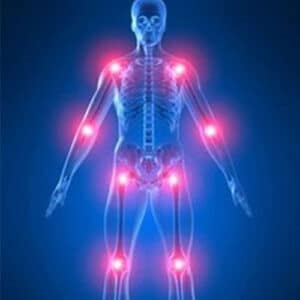What! You have never heard of a muscle-ologists? As peculiar as this sounds, it amazes me that there is no such thing as a “muscle doctor.” Think about it, there is a doctor for nearly every major organ. A heart doctor is a cardiologist. A skin doctor is a dermatologist. A lung doctor is a pulmonologist. But the muscular system is left without a specialist. If there were such a thing as a muscle doctor I suppose they would be called a myologist.
The primary reason I find this interesting is that a recent Italian study found that the most common reason patients consulted a doctor was due to musculoskeletal pain [1]. With such a high prevalence for injury, treating physicians should be aware of the mechanisms of muscle pain as best as they are understood. It is well documented that muscles have nociceptors (pain receptors) and therefore can be a source of pain [2]. These nerve endings can be activated by mechanical stimuli such as trauma or tissue overload, or sensitized by inflammatory changes within the muscle tissue [2]. Muscle pain caused by trauma often resolves with rest. Think of the last time you strained a muscle; it probably took 1-2 weeks of rest and you were back to pain free living. Muscle pain caused by inflammation however, follows a much more complicated healing timeline. Chronic inflammation can lead to regional or centrally referred pain.
The longer you have had muscle pain and inflammation, the more sensitized your nervous system will become. As the nervous system becomes more sensitive, patients often experience hyperalgesia or allodynia. It is at this time that patients tend to seek medical help. Unfortunately, patients with widespread muscle pain are not well understood by the medical community and often get lumped into the diagnosis category of fibromyalgia or myofascial pain syndrome.
Far too often, the medical field is quick to prescribe opiates and send their patients out the door. Although medication has its place in dealing with muscle pain, medication alone is not enough to resolve the problem. For example, Lyrica is often prescribed as a means to control pain by decreasing the number of nerve signals. This may control pain for a period of time, but even Lyrica simply addresses the symptoms without addressing the severe functional limitations that fibromyalgia causes. The pain caused by fibromyalgia affects sleep, activity, and lifestyle choices. Medication is not a fix for the problem, it is simply a tool to manage symptoms. Perhaps the reason that there is no real comprehensive plan of treatment for chronic muscle syndromes is because no one has claimed muscles as their specialty.
I propose that physical therapists should step into the role as muscle doctors. Doctors of physical therapy are highly trained in kinesiology, the study of the mechanics of body movement. What makes the body move? Muscles of course. In addition to studying human biomechanics, physical therapists also address muscle pain through techniques such as deep tissue mobilization, dry needling, myofascial manipulation, and modalities such as heat or intramuscular electrical stimulation.
Take Control of Fibromyalgia
Here is what happens: Although the cause of fibromyalgia is unknown, there are some likely culprits. Trauma (physical or emotional) and an abnormal pain response are possible causes of painful tender points that develop in each region of the body.
Until you get better: Movement is the fuel of all life and promotes healing. Some movement is better than none, especially in the case of fibromyalgia. Healing is often delayed in situations where anxiety and fear of re-injury prevents movement.
Reverse the inflammation: Inflammation prevents nutrients from reaching injured tissues. Some inflammation is natural during the healing process but it can become excessive and persistent due to inactivity, stress, repeated trauma, or lack of treatment. Other weakened or deconditioned areas not affected by the original injury can become painful and limited. Avoid deconditioning and immobility. Partake in an exercise program that is both low load (i.e. swimming) and works on flexibility (i.e. yoga).
Treat trigger points: Tight muscle bands can develop in chronically inflamed muscle tissue and over time can refer pain to other muscles. Through acupressure or massage seek to eliminate trigger points throughout muscle tissue. If, these are unable to remove trigger points, dry needling and myofascial manipulation techniques may be warranted.
Research
1. Salaffi F, De Angelis R, Stancati A, Grassi W: Health-related quality of life in multiple musculoskeletal conditions: a cross-sectional population based epidemiological study. II.The MAPPING study. Clin Exp Rheumatol 2005; 23: 829–39.
2. Mense S. Muscle pain: mechanisms and clinical significance. Dtsch Arztebl Int. Mar 2008;105(12):214-219.



0 Comments